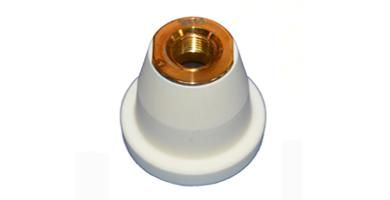Laser, a technical word, is one of the most common words which we have been using and hearing for a long time.
But,
Did you know that laser is an acronym for “Light Amplification by Stimulated Emission of Radiation”? It is a byword for efficiency and quality in materials processing since its emergence in the sixties.

It offers an entirely new way of using energy which helps manufacturing, medicine, and communications. You can heat, melt and even vaporize materials using lasers. It is an ideal medium for channelizing intense but controllable energy.
But they are most popular for cutting.
So, let’s brush up the basics of laser cutting and its uses?
Laser cutting is the thermal process that focuses laser beams on a particular area to melt material. It uses a coaxial gas jet to eject molten material and create a kerf.
As the laser beam or workpiece moves continuously under CNC control, it produces a cut.
There are three varieties of laser cutting:
- Fusion Cutting
- Flame Cutting
- Remote Cutting
Let’s look at each in brief.
Fusion cutting: This cutting uses molten material to expel the kerf. Nitrogen gas does not react with molten material and as a result, it does not contribute to the energy input. It is advisable to use lasers with Trumpf spare parts and Fanuc spare parts for the best quality work.
Flame cutting: This laser cutting uses oxygen along with other gases and exerts the mechanical force on the molten material. This, in turn, creates an exothermic reaction which increases the energy input process.
Remote cutting: In this laser cutting, the material partially evaporates because of the high-intensity laser beam. As a result, this cuts the thin sheets without using any gas.
You can use automation in the laser cutting process using offline CAD/CAM systems. It helps in controlling three-axis flatbed systems or six-axis robots for three-dimensional laser cutting.
With the improvements in accuracy, edge squareness, and heat input control, the laser cutting technique is replacing other profiling cutting techniques like plasma and oxy-fuel.
Let’s look at the most vital thing in a laser cutting machine which we tend to forget easily.
Yes, you guessed it right, we are talking about the lens in laser cutting machines. We often forget that lenses can affect the thickness of the cut which is important for the cut.
So, let’s understand how it works.
In laser cutting, you focus laser beams using a lens (sometimes a concave mirror) on a small spot where you need to produce a laser cut.
One can define a lens by its focal length. And what is focal length? It’s the distance from the lens to the focused point.
There are two basic things which affect the efficiency of laser cutting:
- Focused point diameter(d)
- Depth of focus (L) - Focal Length
The effective distance which gives you satisfactory cuts is known as the depth of the focus. You can also define it as the distance at which the area of the spot doesn’t increase beyond 50%.
These two things, depth of focus and focal spot diameter, depend on the raw laser beam diameter on the lens and the focal length of the lens. And on the spare parts you use. For best results, use Trumpf spare parts and Fanuc spare parts.
Understand, constant raw laser beam diameter decreases the focal length of the focusing lens which results in smaller focal spot diameter and focus depth.
If there is a constant focus length lens then it increases raw beam diameter which reduces the spot diameter and depth of focus.
To compare lasers with different beam diameters we use focus f-number, which is focal length, F, and then divide it by incoming raw beam diameter, D.
There are two major requirements you need to consider for laser cutting:
- High power density which focuses on small spot size.
- Long depth of focus to process thick materials providing a reasonable amount of tolerance to focus on position variation.
But, the problem occurs when we realize that these two requirements are in conflict and you need to make some or the other compromises.
Hence, you need to consider the fact if the focal length is short, then the lens would be closer to the workpiece which can cause damages to the lens during the cutting process.
Wrapping it up:
It is necessary to understand the basics of any machinery part before you buy it. Because as an owner of that product you need to understand why you are investing in that thing and how even a small machinery part can impact highly on your business. Also, make sure to replace any worn out parts with only high-quality parts like Trumpf spare parts and Fanuc spare parts.

 Log in with Facebook
Log in with Facebook 






